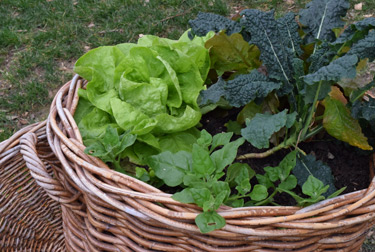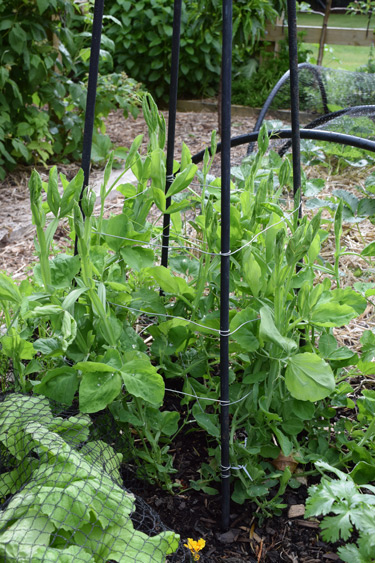Small space gardening
Downsizing to a small urban plot presents a mixed bag of challenges for gardeners keen to grow their own food. But, as the gardeners at Copper Crest have found, determined gardeners will always find a way and attention to detail can yield fantastic results.
Pick favourites
Devote most of your precious sunny ground to growing what you most want to eat, but leave some space to experiment with something new.
Focus on nutrition. Green leafy vegetables and salad greens are the most nutrient dense. And there is no waste - everything the plant grows above ground is something to eat.
Go vertical
Every sunny wall or fence is a potential place to grow food. Espalier a fruit tree or train a summer crop of tomatoes or climbing beans. Passionfruit is an option for a warm frost free position. As long as they have somewhere to scramble, clambering cucurbits like pumpkins and zucchini need not use up an entire garden bed.
Fast fillers
Intercropping is a way of growing two or more different crops in the space that would usually produce one. So with careful timing plus a dash of opportunism, a given area will produce a higher total yield than a single crop. Early in summer we can fill the spaces between slower crops (such as tomatoes and zucchini) with quick growing salad greens. Arugula rocket presumably wasn’t called rocket because it looks like a rocket. Other examples of intercropping are carrots and radishes, tomatoes and lettuces, corn and salad greens.
Larger vegetables like brassicas need plenty of space at maturity, but the spaces between them when young can be planted with a quick crop. One of the advantages of being an urban gardener is that a garden centre is never too far away to call in and pick up a punnet of vege seedlings to plug any spaces freed up as mature veges are harvested. Many vegetables can be eaten at a young stage, making room for the remains veges to grow larger. For instance, a young leek can be used as a spring onion.
Double act
Many plants are both edible and ornamental. Think colourful cabbages and feather fennel, edible flowers (such as calendula and borage) for salads and fruit trees for shelter and screening.
Mix it up
When space is short there is no reason why you can’t grow flowers in the vege plot and vice versa.
Grow herbs for flavour
Even if you decide not to grow veges, herbs are easy to grow and an easy away to add extra interest to the simplest of meals.
Soil boosters
When growing crops close together, nutrients must be replenished constantly. Many of the gardeners at Copper Crest recommend sheep pellets as a way of boosting both soil substance and nutrients. For quick succession, supplementing liquid fertiliser is the easiest way to keep up with feeding demands of fast growing vege plants.
TIP: Soak seedlings in seaweed solution to boost early root development and reduce transplanting shock.

1-Oct-2018



